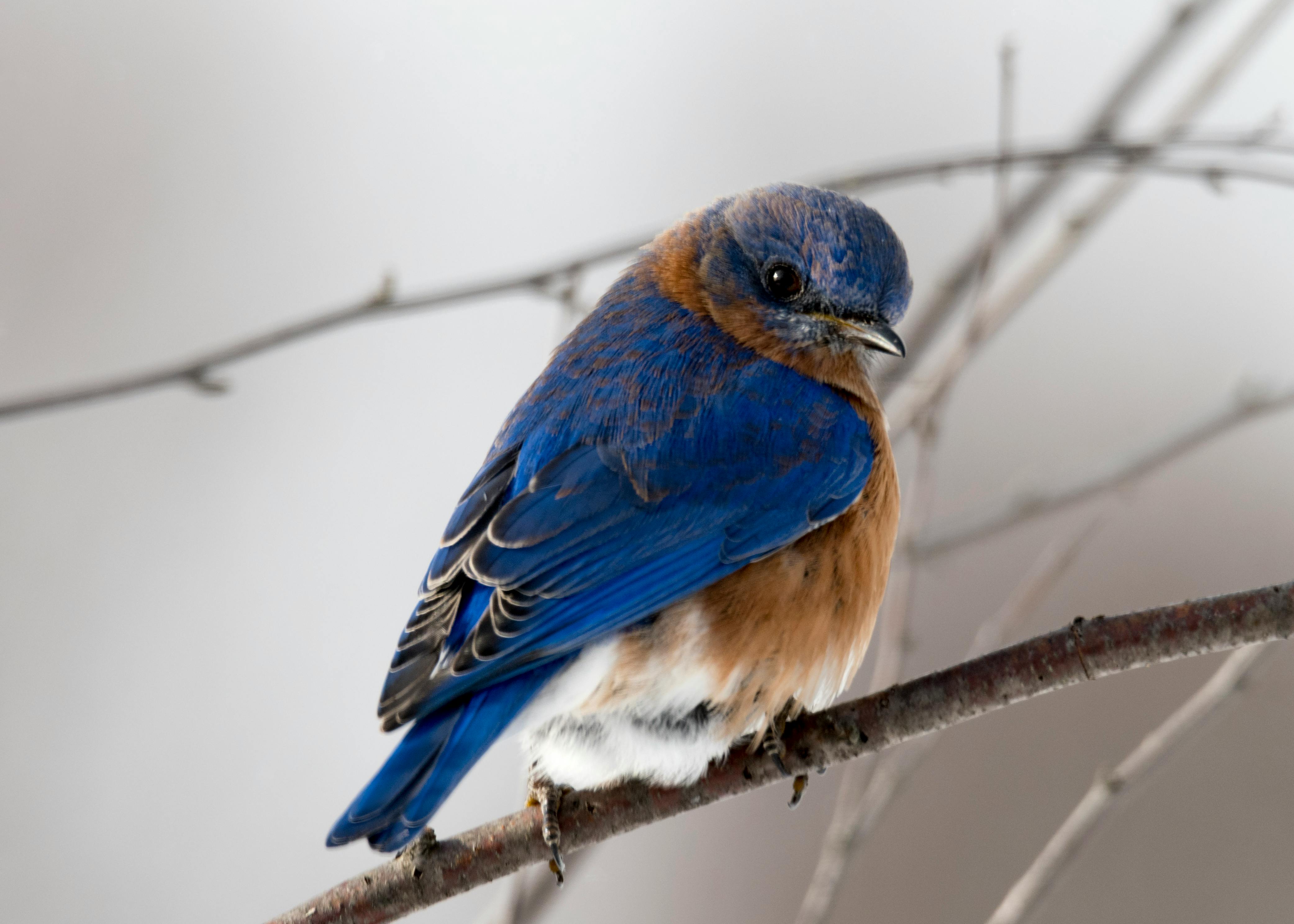The Russian Blue is an intelligent and playful feline that has a distinguished soft, dense fur in a beautiful shade of blue-grey. This medium-sized breed is known for its loving temperament and independent nature. They are often referred to as the “aristocrats” of the cat world due to their regal appearance and graceful movements. This breed is perfect for those looking for an affectionate, loyal companion that will happily curl up on the couch with them during a movie night.A Russian Blue is a breed of domestic cat with a distinct blue-gray coat, green eyes, and an alert, curious nature. It is known for its intelligence, agility and loyalty to its family. The breed is believed to have originated in the port city of Arkhangelsk in Russia. The breed is also known for its hypoallergenic qualities, making it popular among allergy sufferers.
Contents
The Origin of the Russian Blue
The Russian Blue is an elegant and intelligent cat breed, known for its distinctive blue-gray fur and striking green eyes. The breed originated in Russia during the mid-19th century, though its exact history is somewhat of a mystery. It is believed that the Russian Blue was bred from wild cats caught near the Arctic Circle, giving it a hardy constitution and resilient personality. The breed also has a long association with seafaring, as it was said to have been a favorite of sailors who appreciated its intelligence and loyalty.
Today, the Russian Blue is popular in both Europe and America for its beauty, intelligence, and gentle nature. The breed has an even temperament that makes it great for families with young children or other pets, but it can also be aloof with strangers. Its short coat requires minimal grooming and maintenance, but regular brushing will help to keep it looking sleek and shiny.
Despite its history as a working cat on ships, the Russian Blue’s popularity as a companion animal has been growing steadily in recent years due to its loyal and affectionate nature. Its popularity as a show cat has also increased significantly in recent decades thanks to its stunning appearance. No matter what type of home you provide for your Russian Blue, you can rest assured that it will be an active yet laid-back companion who will bring joy to your home for many years to come.
Physical Characteristics of the Russian Blue
The Russian Blue is a medium-sized cat known for its luxurious, silvery-blue coat. It has large, almond-shaped eyes that are usually green or yellow in color. The breed has a short muzzle and a broad face with prominent cheeks and a slightly rounded forehead. The neck is long and slender and the body is muscular and athletic. The legs are short but powerful, with large, round paws. The tail is long and tapering and tapers to a point at the end. The Russian Blue’s coat is thick, dense and plush, with an even blue-gray color throughout. It has an undercoat that is light in color, which helps to insulate it from cold temperatures. It also has tufts of fur on the ears and between the toes to protect it from dirt and debris. The Russian Blue’s temperament is sweet, gentle and intelligent. This breed loves human companionship and enjoys being around people of all ages. They are loyal pets that thrive on physical affection, playtime activities and mental stimulation.
Temperament
The Russian Blue is an intelligent and affectionate breed, often described as gentle, sweet, and playful. They are typically good with children and other animals, making them ideal family pets. They also tend to be quite independent and can be quite reserved around strangers. The Russian Blue has an even-tempered nature and is not prone to excessive barking or meowing. While they may sometimes be shy or timid, they are usually very loving and loyal companions.
Personality
The Russian Blue is a highly intelligent breed that is known for its gentle nature and playful attitude. They can be quite independent but also enjoy spending time with their owners. They are very curious cats who love to explore their environment, often getting into mischief in the process! The Russian Blue is also very loyal to their family members, usually forming strong bonds with the people they live with. They make great companions for anyone looking for an affectionate cat who loves a good cuddle session!
General Care Requirements of a Russian Blue
The Russian Blue is an intelligent and active cat that requires lots of attention, playtime, and regular grooming. They can be quite independent but also enjoy being around people. They are friendly and gentle cats, who love to play with toys and explore. It is important to provide your Russian Blue with a stimulating environment that includes plenty of mental and physical activities. Regular brushing is essential for their long-haired coat and daily brushing for their short-haired variety. Their diet should consist of a combination of dry food and wet food, as well as fresh treats like fruits and vegetables.
It is important to keep the litter box clean at all times, as the Russian Blue loves clean surroundings. Regular check-ups with your vet are also recommended to ensure your cat remains healthy. As they are very active cats, it is important to provide them with plenty of space to run around in or interactive toys to keep them entertained. Although they may not need as much exercise as other breeds, regular walks or playtime outside is beneficial for their health.
It is also important to provide your Russian Blue with companionship; having another cat or pet in the home can help them feel secure and loved. Grooming should be done regularly in order to keep their coat healthy, as well as trimming their nails (if needed). With proper care, your Russian Blue will live a long life full of love and happiness!

Feeding Requirements for a Russian Blue
The Russian Blue is a beautiful, playful, and intelligent cat breed. As with all cats, it is important to provide your Russian Blue with a balanced diet that meets their nutritional needs. A quality cat food should contain high-quality animal proteins as the primary ingredient, as well as other essential vitamins and minerals. Additionally, you should feed your Russian Blue wet food at least twice per day to ensure they are getting enough moisture in their diet.
It is important to provide your Russian Blue with plenty of fresh water at all times. You can also give them treats in moderation, but make sure they are high-quality treats that are designed for cats. Avoid giving them human food as this can upset their delicate digestive system. Additionally, limit table scraps and snacks to avoid overfeeding and obesity.
When introducing new foods to your Russian Blue’s diet, it is important to do so slowly. Start by adding small amounts of the new food into their existing meals and gradually increase the amount over time. This will help ensure that your cat does not experience any digestive upset from the transition. It is also important to keep an eye on your Russian Blue’s weight and adjust their portions accordingly if they appear to be gaining or losing too much weight.
Overall, proper nutrition is essential for keeping your Russian Blue healthy and happy for years to come. Feed them quality wet food and treats in moderation, provide them with plenty of fresh water, and introduce any new foods slowly in order to ensure they receive the nutrition they need without any digestive issues or obesity problems
Grooming Needs for a Russian Blue
The Russian Blue cat is known for its beautiful, soft and shiny coat. This elegant feline requires regular grooming to keep its coat looking its best. The good news is that this breed does not require a lot of grooming and is easy to maintain.
Brushing should be done on a regular basis, at least twice a week, to remove dead fur, dirt and debris from the coat. A metal comb or slicker brush works well for this purpose. The Russian Blue also benefits from occasional baths to keep its fur clean and fresh.
Nail trimming should be done on a regular basis as well, usually every two to three weeks. This helps ensure that the claws do not become too long and cause damage to furniture or scratch people when being held. It also helps prevent overgrowth of the nails which can lead to painful ingrown nails in cats.
The ears should be checked regularly as well and cleaned if necessary with an ear-cleaning solution recommended by your veterinarian. Dental care is also important for cats and should include brushing their teeth at least once a week with a toothpaste approved for use in cats.
Finally, regular visits to the veterinarian are essential for all cats but especially important for Russian Blues as they can be prone to certain genetic health issues such as polycystic kidney disease (PKD). Keeping up with vaccinations is also important in keeping your cat healthy.
Overall, caring for a Russian Blue is relatively easy compared to other breeds of cats thanks to their low maintenance coats, but they do need proper grooming care like all other cats in order to stay healthy and look their best!
Common Health Issues in the Russian Blue
The Russian Blue is a very healthy breed of cat, known for its long life and resilience. However, as with all cats, they are prone to certain health issues. Common health problems seen in the Russian Blue include heart disease, kidney disease, and dental issues.
Heart disease is the most common health issue seen in the Russian Blue. It can affect both adult cats and kittens and is usually caused by a congenital defect or genetic mutation. Symptoms of heart disease include rapid breathing, difficulty breathing, and an enlarged heart. If your cat is exhibiting any of these symptoms, it is important to seek veterinary care immediately.
Kidney disease is another common health issue seen in the Russian Blue. This condition can be caused by infections or environmental toxins and can result in excessive drinking or urination, vomiting, weight loss, poor appetite, and lethargy. If your cat shows any signs of kidney disease it should be taken to a vet for diagnosis and treatment as soon as possible.
Dental issues are also common in the Russian Blue breed. These issues can range from mild gingivitis to periodontal disease or tooth decay that can lead to serious infections if left untreated. Regular dental cleanings are essential to maintain good oral hygiene for your pet and help prevent dental problems from occurring.
Overall, the Russian Blue is a healthy breed with few major medical problems but regular vet visits are still important for early detection of any potential issues that may arise so that appropriate treatment can be administered quickly if needed.

Conclusion
The Russian Blue is an intelligent and affectionate breed of cat that has a unique look and personality. They are also known for their loyalty, intelligence, and good nature. While they may be a bit stand-offish with strangers, they will quickly warm up to anyone they recognize as a friend. They make great family pets and are often very loyal to their owners.
Russian Blues are also very low maintenance cats who are easy to groom and require minimal care. They can easily adapt to different environments and have few health problems compared to other breeds of cats.
Overall, the Russian Blue is an excellent choice for those looking for a loving companion with a unique appearance. With their intelligence and gentle nature, these cats make wonderful companions that will brighten any home.
In conclusion, the Russian Blue is an ideal pet for those who want an intelligent and affectionate companion with a unique look. They are easy to care for, low maintenance, and make excellent family pets that will form strong bonds with their owners over time.

0 Comments